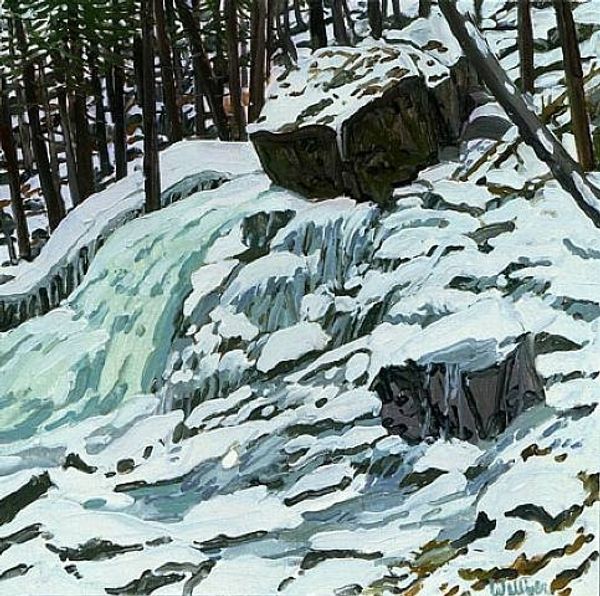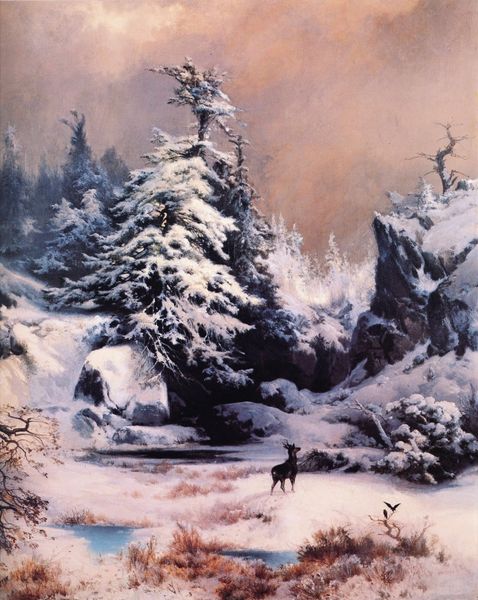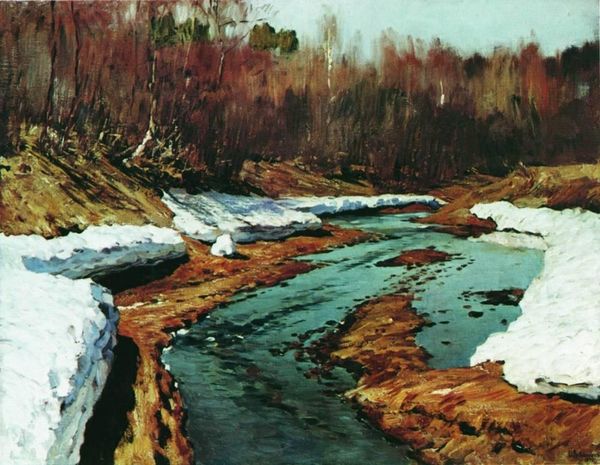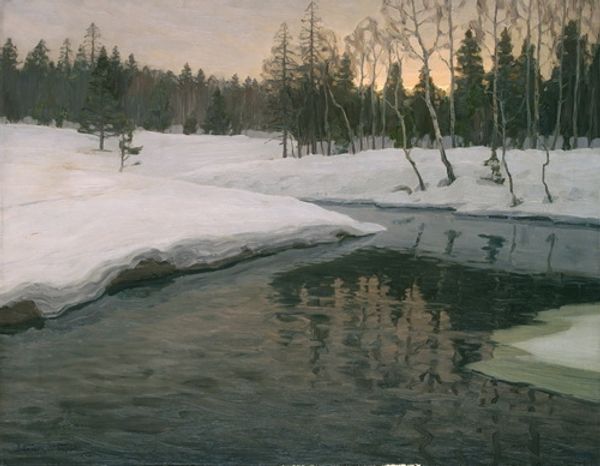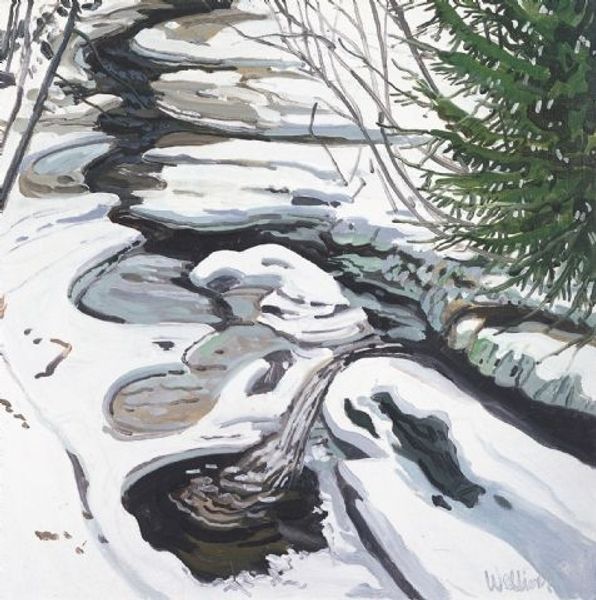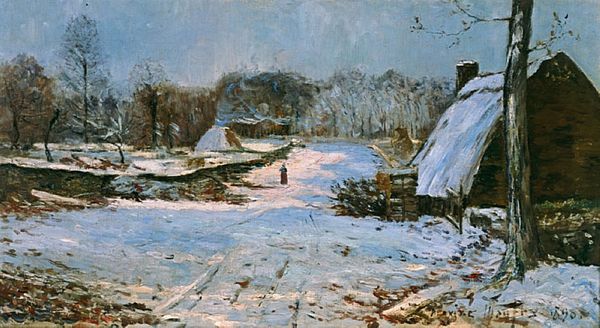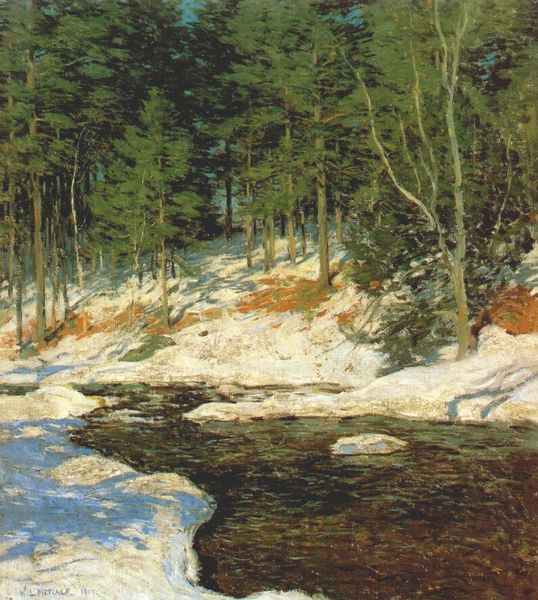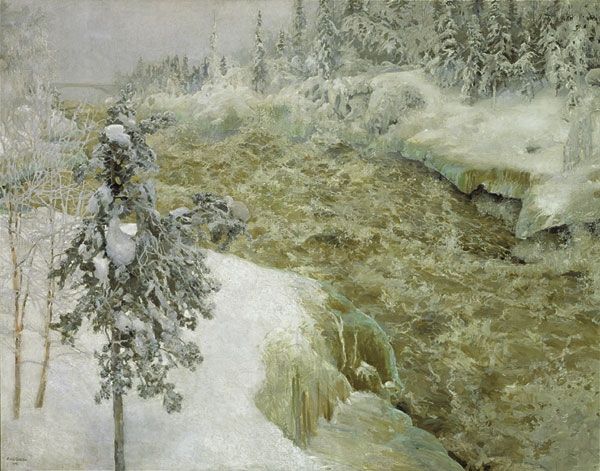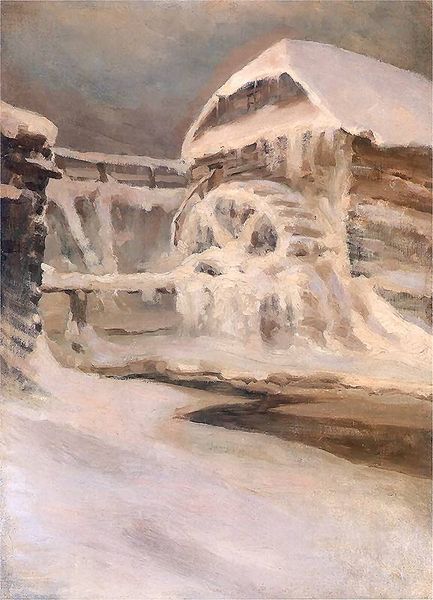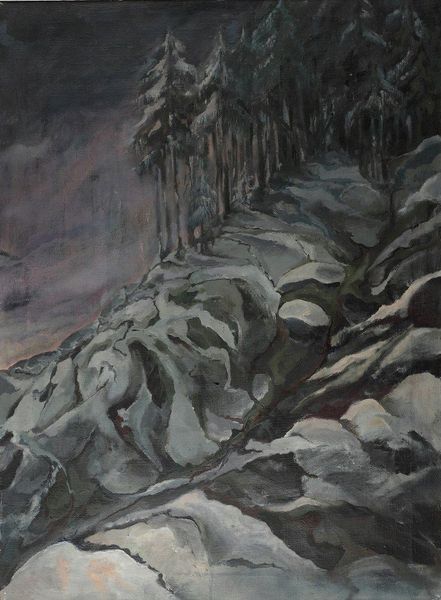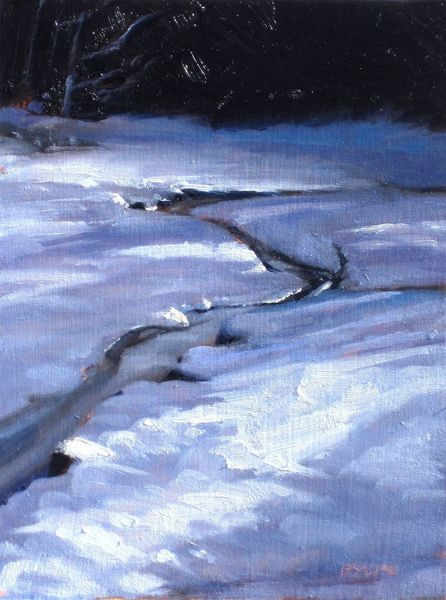
Copyright: Public domain
Curator: Standing before us is Ferdynand Ruszczyc’s "Młyn w zimie," or "Mill in Winter," painted in 1902. It's an oil painting that perfectly encapsulates a cold, stark winter scene. Editor: My initial reaction? Hauntingly beautiful! It's as if the world has exhaled and everything has become still. The blues and whites create this powerful sense of quiet isolation. It's also very...geometric, would you say? Curator: Yes, that geometric structure you perceive is quite intentional. Beyond its initial appeal, Ruszczyc is using potent symbolism here. The mill itself represents industry, work, life sustaining function and this snow covered, barely functioning state evokes themes of stagnation or dormancy, common in winter’s symbolism. The presence of the black hole underneath the mill is quite striking too. Editor: Exactly! It feels almost oppressive. You have all this stillness and silence on the surface, but there is something darker going on below it, just out of sight. Maybe all that accumulated collective memory hiding just beyond reach…Do you think it might connect with the artistic movement of the time? Curator: It could, Impressionism had captured the fleeting beauty of light, however, it can be interpreted also in connection with Art Nouveau which attempted to show beauty in the everyday and draw symbolic and aesthetic power from nature itself. Ruszczyc presents winter not as a purely destructive force, but rather one that holds potent creative power within its icy grip, able to stop machines and work life at any moment. Editor: A creative power within an icy grip…that’s a great line, and it also perfectly sums up how I see Art Nouveau and its impact, to this day. Curator: Considering the time period, this artwork almost serves as a reflective prophecy of sorts—of what could happen when creative pursuits and industry meet periods of rest. Perhaps even highlighting the natural cycle of destruction and subsequent innovation… Editor: You know, considering that the "Mill in Winter" was composed over a century ago, it does speak a great deal about resilience, stagnation, and that recurring cycle of nature versus industry. Thank you for unlocking those historical and psychological elements for me. Curator: Indeed. Seeing through the painting we get an even greater appreciation and deeper understanding of what connects us all in a continuous cultural line, the awareness that this kind of cycle is constant in all societies.
Comments
No comments
Be the first to comment and join the conversation on the ultimate creative platform.

